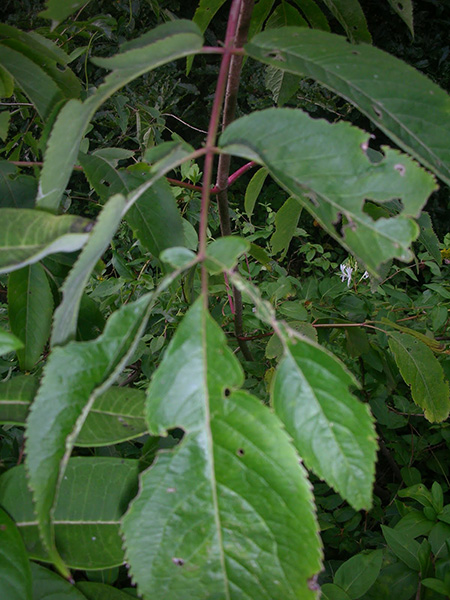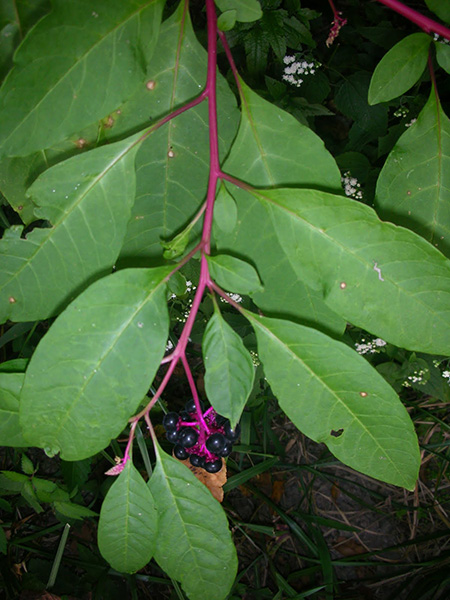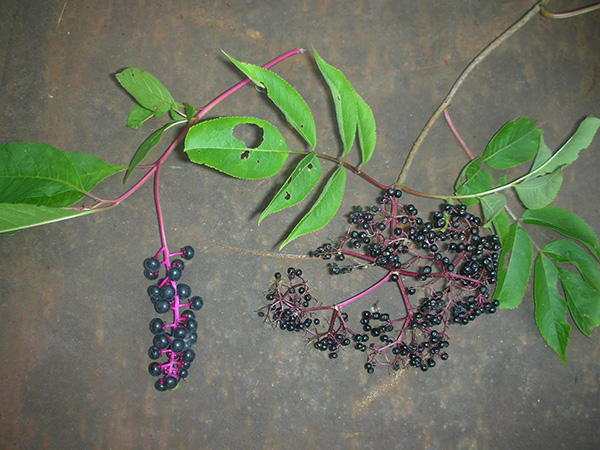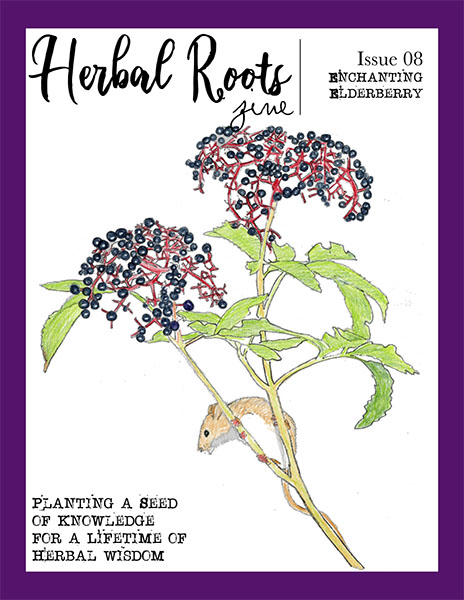Want to learn more about Elderberry? Buy the Elderberry issue here.
Want to learn more about Poke? Buy the Poke issue here.


An elderberry bush…this is about 10-12 feet tall.

Is it Elderberry or Pokeberry?
There seems to be a lot of confusion with the identification of Poke (Phytolacca americana) vs. the identification of Elderberry (Sambucus nigra) …I never imagined that they could be taken for each other but I can see how that could cause confusion so I want to clear this up right now! I’ve had several people contact me about in the past few days and I don’t want anyone else to confuse the two.
The Berries

Large clusters of very tiny, bb sized berries
Elderberries are tiny. They grow in clusters instead of a long cylindrical cone if that makes sense…picture Queen Anne’s Lace or Yarrow with berries and that’s what Elderberry looks like. Pokeberries are about the size of peas with a dent in each berry. Elderberries are about the size of a bb.

This is Poke…notice the Poke berries hang in a long thin cluster as opposed to Elderberry’s umbrella-like clusters
The Flowers
To further illustrate this, compare the flowers of Elderberry and Poke that bloom in early summer:
 This Elder flower looks more similar to a Queen Anne’s Lace flower, while Poke flowers have no petals (the white parts are actually sepals).
This Elder flower looks more similar to a Queen Anne’s Lace flower, while Poke flowers have no petals (the white parts are actually sepals).

Poke flowers also have visible green fruits above their sepals and the entire cluster hangs in a raceme instead of in a cluster.
The Stems
Also, the stems of Elderberry are thin and woody with brown flecks on them. The only part of the Elder bush that is red is the stems that the berries are on and some of the leaf stems. Pokeberry plant stems are generally a purply red.

 Notice the bumpy fleck on the stems of Elderberry. The stems are tree/bark like. Pokeberry stems are fleshy, non-woody.
Notice the bumpy fleck on the stems of Elderberry. The stems are tree/bark like. Pokeberry stems are fleshy, non-woody.
Poke stems are red in color.

The Leaves
The leaves are different too. they look more like the leaves on a Walnut tree, compound. the leaves on Elderberry are opposite while the leaves on Poke are simple and alternate.


Compound leaf (many ‘leaflets’ on a stem of a leaf) of Elderberry

Hard to see here (see comparison pictures below for a better picture) but stems of leaves are opposite on Elderberry (above)

Stems of leaves are alternate on the Pokeberry
Final Thoughts
As an aside, Pokeberries are not as poisonous as people make them out to be…yes, if you ate a bunch of the berries and chewed the seeds in them really well, you would probably puke a lot and may have more serious side effects but they don’t taste very good and the taste alone would stop you. Swallowing a few berries will do nothing more than put your body into high gear to clear out your system. As long as you don’t chew the seeds, it’s not going to do a whole lot to you other than maybe give you diarrhea. (but please, don’t try eating them nevertheless!)
Having said that, Poke is an excellent lymph mover. I’ve used it a lot in the past for swollen lymph nodes and for plugged ducts that cause mastitis. it is a low dose medicinal but a very valuable one!

Poke on the left, Elderberry on the right. Notice Elderberries leaves are opposite on the stem


For one more look at Elderberry, watch Rosemary Gladstar talk about Elderberry.
I hope this helps to clear up any confusion!
Elder and Poke eBooks

Want to learn more about Elderberry? Buy the Elderberry issue here.

Want to learn more about Poke? Buy the Poke issue here.
